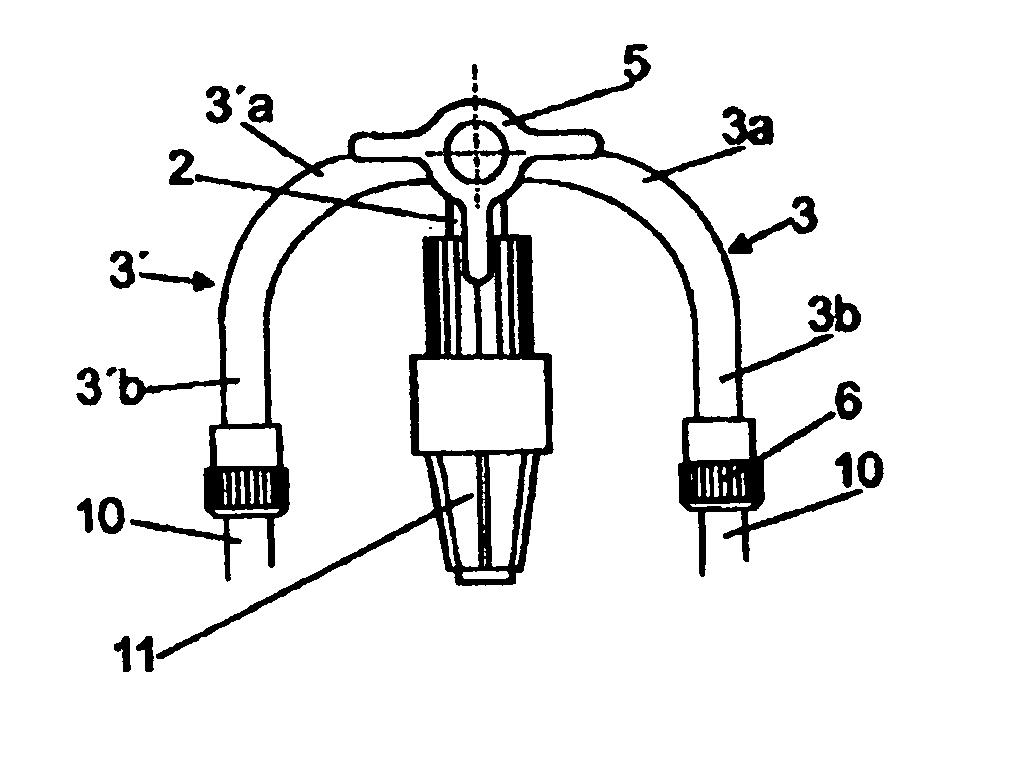Three-way stopcock
a stopcock and three-way technology, applied in the field of three-way stopcocks, can solve the problems of affecting the effect of intravenous therapy, affecting the ability of the patient to return to the initial position, and difficulty in eliminating the problem of occlusion of the arms or channels, etc., and achieves the effect of reducing the risk of occlusion
- Summary
- Abstract
- Description
- Claims
- Application Information
AI Technical Summary
Benefits of technology
Problems solved by technology
Method used
Image
Examples
Embodiment Construction
[0007]In view of the previously outlined, obstruction problems in the secondary arms or channels and reduced flexibility of these, an improved 3-way stopcock has been developed so as to resolve and satisfy these problems. In addition, thanks to this new designed configuration, the stopcock in this invention provides greater flexibility. Therefore, sanitary personnel can handle the secondary arms with greater ease and safety. In the event of acting on secondary arms or routes this will not affect the principal arm or channel. In this way, the secondary arms or routes can be moved with a greater degree of liberty and therefore, intravenous therapy results in no damage for the patient. This way, a problem such as pressure leakage is solved by the present invention.
[0008]The 3-way stopcock for sanitary use developed by the present invention, solves obstruction problems cited before, on the bases of eliminating the orthogonal trajectories of the secondary arms, substituting them for curv...
PUM
 Login to View More
Login to View More Abstract
Description
Claims
Application Information
 Login to View More
Login to View More - R&D
- Intellectual Property
- Life Sciences
- Materials
- Tech Scout
- Unparalleled Data Quality
- Higher Quality Content
- 60% Fewer Hallucinations
Browse by: Latest US Patents, China's latest patents, Technical Efficacy Thesaurus, Application Domain, Technology Topic, Popular Technical Reports.
© 2025 PatSnap. All rights reserved.Legal|Privacy policy|Modern Slavery Act Transparency Statement|Sitemap|About US| Contact US: help@patsnap.com


